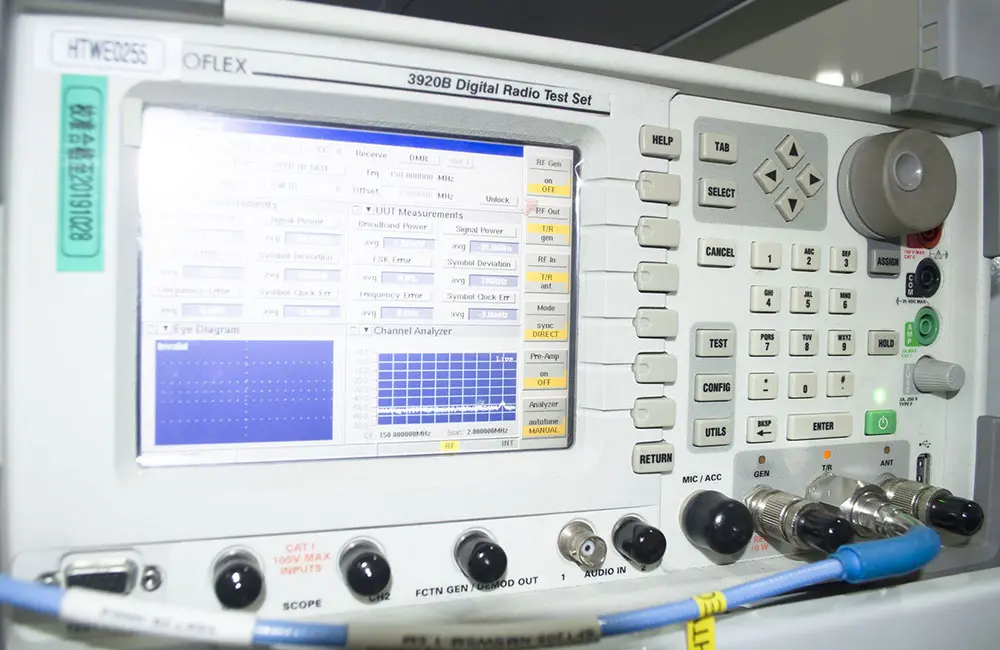
Why EMC Test Is Required?
In today's world where electronic and wireless devices are ubiquitous, Electromagnetic Compatibility (EMC) testing has become a key link in product development and compliance access to markets worldwide. It is not only related to the reliability of the equipment itself but also directly affects user experience and public safety.

Technical Dimension
① Suppress Electromagnetic Interference (EMI): Electronic devices generate electromagnetic noise during operation, which may interfere with other devices through conduction (e.g., power lines) or radiation (e.g., wireless signals). For example, EMI from medical equipment may cause false alarms in monitors, even endangering patient safety. EMC testing quantifies and evaluates the interference level of equipment to ensure it meets limit requirements.
② Enhance Electromagnetic Susceptibility (EMS): Equipment must have the ability to resist external interference, such as Electrostatic Discharge (ESD) and lightning surges. Taking automotive electronics as an example, an ECU (Electronic Control Unit) that fails immunity testing may malfunction due to electromagnetic pulses during driving, leading to safety accidents.
③ Optimize EMC Design: EMC testing can expose design flaws, such as loop interference caused by unreasonable PCB wiring or radiation leakage due to insufficient shielding. Through early test iterations, enterprises can reduce the cost of later rectification.
Regulatory Compliance
① Mandatory Certification Requirements: EU CE certification, US FCC certification, and China ccc certification all list EMC as a mandatory test item. For example, the EU's EMC Directive (2014/30/EU) requires all electrical products to pass EMI and EMS tests; otherwise, they are prohibited from circulation.
② Respond to International Standard Updates: EMC standards in various countries are dynamically adjusted. For instance, South Korea revised EMC standards for wireless communication equipment in 2025, requiring enterprises to update their test plans accordingly. Compliance testing is a "pass" for product export.
③ Avoid Trade Barriers: Technical Barriers to Trade (TBT) often use EMC as an entry point to restrict imports. Testing can prove that products comply with the regulations of the target market, avoiding return due to EMC issues.
Comparison of emc compliance Standard Systems in Europe and the United States
1. EU: EMC Directive (2014/30/EU) under CE Certification
(1) Core Standards:
① EMI (Electromagnetic Interference): EN 55032 (multimedia equipment), EN 55011 (industrial equipment)
② EMS (Electromagnetic Susceptibility): EN 61000-4 series (e.g., ESD, surge, voltage fluctuations)
③ Harmonics and Flicker: EN 61000-3-2 (harmonic current), EN 61000-3-3 (voltage changes)
(2) Scope of Application: All electrical products, including industrial equipment, household appliances, medical devices, etc.
(3) Certification Mode: Enterprises can issue a Declaration of Conformity (DoC) independently or conduct testing through third-party laboratories (e.g., TÜV, SGS).
1. US: Part 15/18 Rules under FCC Certification
(1) Core Standards:
① fcc part 15: Applies to unintentional radiators (e.g., Wi-Fi, Bluetooth), requiring conduction and radiation emission limits.
② fcc part 18: Regulates radio frequency emissions from industrial, scientific, and medical equipment (ISM bands).
(2) Certification Methods:
① fcc id: Requires testing by third-party laboratories (e.g., ISO/IEC 17025-accredited institutions), applicable to wireless devices.
② fcc sdoc: Self-declaration by enterprises, applicable to non-wireless low-power devices.
(3) Spectrum Management: Strictly limits the occupied bandwidth of devices (e.g., Wi-Fi must be ≤50MHz) to avoid interfering with communication networks.
Market Competition
① Improve Product Reliability: Equipment with excellent EMC performance can operate stably in extreme environments (e.g., high temperature, high humidity), reducing after-sales failure rates. For example, industrial automation equipment can adapt to the electromagnetic noise environment of factories after passing EMS testing.
② Differentiated Competitive Advantage: Among similar products, passing rigorous EMC testing (e.g., military-grade immunity) can be used as a selling point. Consumer electronics brands often use "low radiation" and "anti-interference" as promotional labels to attract safety-conscious users.
③ Protect Brand Reputation: Product recalls caused by electromagnetic interference (e.g., wireless chargers interfering with medical equipment) can seriously damage brand credibility. Preventive testing can reduce such risks.
Core Methods and Challenges of EMC Testing
① Test Types: Include Conducted Emission (CE), Radiated Emission (RE), Electrostatic Discharge (ESD), Surge, etc., covering both EMI and EMS directions.
② Technical Difficulties: Localization of high-frequency signal interference, compatibility of multi-device collaborative testing, simulation of complex electromagnetic environments, etc.
③ Solutions: Adopt shielding technology, optimize grounding design, introduce filters, and leverage professional laboratory resources.
Email:hello@jjrlab.com
Write your message here and send it to us
 What Are the Testing Items of California Propositi
What Are the Testing Items of California Propositi
 E-Cigarette EU TPD Testing
E-Cigarette EU TPD Testing
 Testing Certification for E-cigarettes Exported to
Testing Certification for E-cigarettes Exported to
 What is Amazon US CPC Certification?
What is Amazon US CPC Certification?
 UK Toy Safety Regulation Standard EN 71-13
UK Toy Safety Regulation Standard EN 71-13
 What is EU UFI Registration?
What is EU UFI Registration?
 EU UFI Registration for E-cigarette E-liquid
EU UFI Registration for E-cigarette E-liquid
 How to get the MSDS Report for Electronic Cigarett
How to get the MSDS Report for Electronic Cigarett
Leave us a message
24-hour online customer service at any time to respond, so that you worry!




